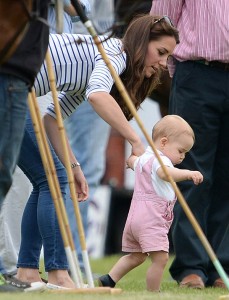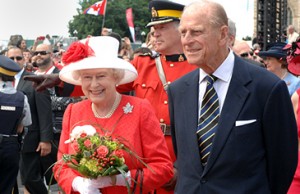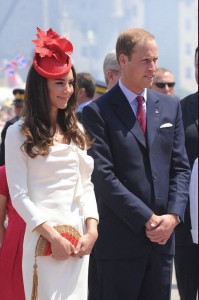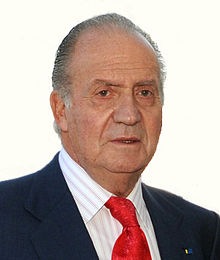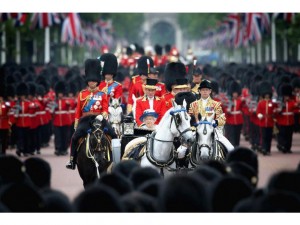
Queen Elizabeth II and Prince Philip, Duke of Edinburgh parading down the Mall for the 2014 Trooping the Colour Parade. Photo credit: Chris Jackson?GETTY
1) The Queen Celebrated Her Official Birthday in the United Kingdom on June 14, 2014 at the annual Trooping the Colour Ceremony
The History: In the British Isles, the monarch’s birthday has been a time for public celebrations for centuries. Elizabeth I (r. 1558-1603) employed a “Fire Master of England” to release fireworks on special royal occasions. The earliest versions of the Trooping the Colour parade date from the reign of King Charles II (r. 1660-1685). Following the Restoration of the monarchy in 1660, regiments displayed their flags in a parade, enabling all soldiers to recognize their regimental colours for use as a rallying point in battle. During the reign of King George II (r. 1727-1760), Britain decided to combine the celebration of the sovereign’s official birthday with the Trooping the Colour Parade. In 1901, King Edward VII, whose actual birthday was November 9, decreed that the Trooping the Colour should always take place in June and was the first monarch to review the troops in person at this event. The Queen has attended Trooping the Colour every year of her reign except for 1955, when a railway strike prompted the cancellation of the event.
The celebration of the sovereign’s official birthday varies throughout the Commonwealth. For more on how the Queen’s birthday is celebrated outside the UK, including Victoria Day in Canada see my blog post “Why The Queen’s Annual Birthday Celebrations Take Place On Different Days Around The World”
2) Prince William, the Duke of Cambridge celebrated his first Father’s Day on the polo field. The Duchess of Cambridge and Prince George were there to watch the game.
The History: Prince George of Cambridge, who will be one year old next month, made his first public appearance since his April tour of New Zealand and Australia with his parents, the Duke and Duchess of Cambridge, when he attended a charity polo match on Father’s Day. George wore red and white striped overalls to the Jerudong Polo Trophy at Cirencester Park Polo Club demonstrating that William and Kate are not constrained by “blue for a boy, pink for girl” stereotypes when dressing their son. George’s overalls are reminiscent of earlier eras when all royal babies were dressed similarly. For example, the generation of European royal babies born in the two decades before the First World War wore white dresses as infants then sailor suits as toddlers.
Prince William enjoys a close relationship with his son, George, and father, Prince Charles. Multiple generations of harmonious father-son relationships are rare in royal history. For centuries, raising an heir often meant raising a rival. The 18th century House of Hanover was notorious for the poor relationships between monarchs and their adult sons but other dynasties also had their share of absentee, resentful or overbearing royal fathers. In contrast, both Charles and William were present in the delivery room when their children were born and have taken an active role in child rearing.

Princess Letizia, Prince Felipe, Queen Sofia and King Juan Carlos of Spain. Photo credit: Abraham Carralero/Getty
3) King Juan Carlos and Queen Sofia of Spain are expected to keep their titles after the installation of the new King Felipe VI on June 19
The History: Following the installation of their son as King Felipe VI, King Juan Carlos and Queen Sofia are expected to retain the titles of King and Queen. Spain’s government is also taking measures to ensure that Juan Carlos retains some degree of the judicial immunity he enjoyed as King after he abdicates, examining measure to prevent civil suits, such as paternity cases.
Spain has debated the appropriate title for a reigning monarch’s father before. When Juan Carlos became King in 1975, he succeeded the dictator Francisco Franco rather than his father, Infante Juan so the new King had to address the question of his father’s title under a restored Spanish monarchy. Two years after Juan Carlos became King, Juan formally renounced his rights to the throne and received the historic title of Count of Barcelona. Since the Catalan parliament in Barcelona approved a declaration asserting that Catalonia is a sovereign entity last year “Count of Barcelona” would be a controversial title for Juan Carlos in the 21st century.
